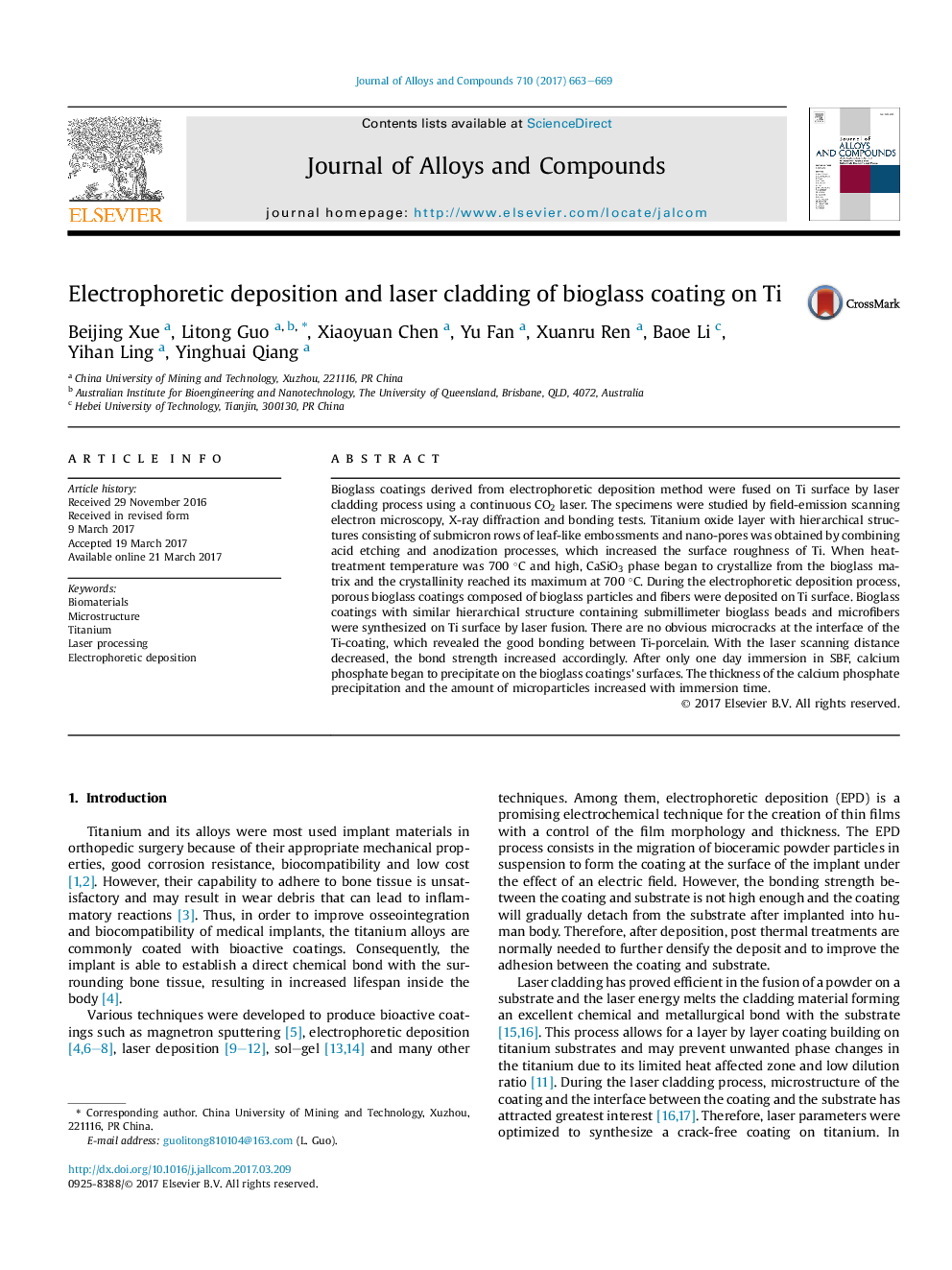| Article ID | Journal | Published Year | Pages | File Type |
|---|---|---|---|---|
| 5461156 | Journal of Alloys and Compounds | 2017 | 7 Pages |
Abstract
Bioglass coatings derived from electrophoretic deposition method were fused on Ti surface by laser cladding process using a continuous CO2 laser. The specimens were studied by field-emission scanning electron microscopy, X-ray diffraction and bonding tests. Titanium oxide layer with hierarchical structures consisting of submicron rows of leaf-like embossments and nano-pores was obtained by combining acid etching and anodization processes, which increased the surface roughness of Ti. When heat-treatment temperature was 700 °C and high, CaSiO3 phase began to crystallize from the bioglass matrix and the crystallinity reached its maximum at 700 °C. During the electrophoretic deposition process, porous bioglass coatings composed of bioglass particles and fibers were deposited on Ti surface. Bioglass coatings with similar hierarchical structure containing submillimeter bioglass beads and microfibers were synthesized on Ti surface by laser fusion. There are no obvious microcracks at the interface of the Ti-coating, which revealed the good bonding between Ti-porcelain. With the laser scanning distance decreased, the bond strength increased accordingly. After only one day immersion in SBF, calcium phosphate began to precipitate on the bioglass coatings' surfaces. The thickness of the calcium phosphate precipitation and the amount of microparticles increased with immersion time.
Related Topics
Physical Sciences and Engineering
Materials Science
Metals and Alloys
Authors
Beijing Xue, Litong Guo, Xiaoyuan Chen, Yu Fan, Xuanru Ren, Baoe Li, Yihan Ling, Yinghuai Qiang,
